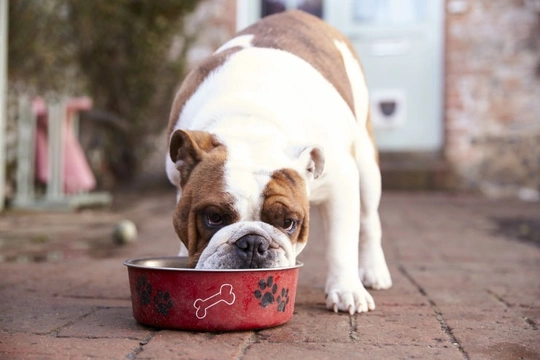
Five common misconceptions about dog food that should be addressed
Most dog owners have a fairly basic understanding of what and how we feed to our dogs, looking for a complete food that the dog will eat, that is convenient to provide, and that falls within the price range and budget we have set to spend.
However, regardless of whether you choose your dog’s food with great care and spend more on their meals than your own or if you just pick the first viable bag you pass in the supermarket, many dog owners hold a range of incorrect misconceptions about dog food, its ingredients, make-up, and what is and is not important or helpful within the dog’s diet.
Even well-informed dog owners that pick the food with care sometimes don’t even realise that this is the case – and whilst all complete and age-appropriate diets should be good enough to feed to any healthy dog, that doesn’t necessarily mean that they are the best choice – or that what you look for in your dog’s food is what is really important.
In this article, we will look at five common misconceptions about dog food that many owners hold – and the truth behind them. Read on to learn more.
The higher the protein levels, the better
Your dog needs a specific balance of nutrients, including protein, fat, carbs and vitamins and minerals – and protein is a very important part of this. However, high protein dog foods are not actually better for most dogs than those with a more average amount, and too much protein can actually be bad for your dog.
When you look at the nutritional analysis of a complete dog food, the percentage of protein should range from around 20-30% of the complete nutritional makeup – anything below 15% is too low, and higher than 30% is too high, unless your vet has told you that your dog needs a higher protein diet.
It is more important to look for a good quality source of protein – meat instead of meat meal – and the right amount of protein, than choosing a high protein food for the sake of it because you think it will benefit your dog.
Grains provide fibre and nutrition
Grains such as wheat and corn are commonly used to bulk out dog foods, often being the largest ingredient in many cheaper dog food offerings. The proliferation of such grains understandably leads dog owners to believe that they are necessary as part of a balanced diet – but just as humans don’t actually need to eat bread or pasta and get little nutritional value from them, so too do dogs not need grains like these.
There is little to no nutritional value in wheat and other grains for dogs – your dog cannot process them into energy, and their presence means that your dog will need to eat more to get the nutrition that they do need and to feel full – and will poop more because of the grain they can’t process!
Feeding a more expensive food is definitely out of my price range
For dog owners looking to feed a grain free or higher quality diet, the price is often a great deterrent, and such foods do tend to be more expensive when you simply compare the like for like cost for a certain quantity of the food.
However, check the feeding instructions – you will find that a grain free or more nutritious food needs to be fed in smaller quantities, because it is not bulked up with grains. This means that a bag will last you longer – and may cost the same or even potentially less than feeding a larger amount of a lower quality food.
Dog foods contain ash as an ingredient
Looking at the nutritional analysis of dog food, you will see ash given as a percentage. Ash – the waste product left behind after something has burned – might seem like something that is highly inappropriate to include in dog food at best, or harmful at worst. However, dog foods do not actually contain ash as an ingredient – and the ash percentage instead refers to the volume of ash left per weight if the food was incinerated or burned.
This information is important, because the ash that remains after burning a food (either by means of fire or by the process of digestion) indicates the nutrients within it, and the lower the level of ash, the more of the ingredients your dog’s body can use and convert to energy.
Higher quality foods will show lower ash levels – but all dog foods will show an ash percentage, so don’t worry that this is something that has been added to the food, when it is not!
Dry food just means my dog will drink more water
There are two main methods of feeding your dog a complete packaged diet – dry food or kibble, and wet food, such as cans, pouches and trays. Many dog owners feed a combination of both – but the convenience of kibble makes it very popular. Dry kibble has a much lower amount of water within it than wet food, which is why we feed less of it and it is easier to store – but it also means that your dog won’t be getting as much hydration.
Dogs that eat dry kibble rather than wet food will need to drink more water – but they may not drink enough, which can lead to them often suffering from a low level of dehydration, which they might not even realise.
Over time, this can increase the risk of problems such as kidney problems and urinary stones and crystals – so don’t simply assume that your dog will naturally correct their higher than usual need for water themselves when you feed them kibble.



